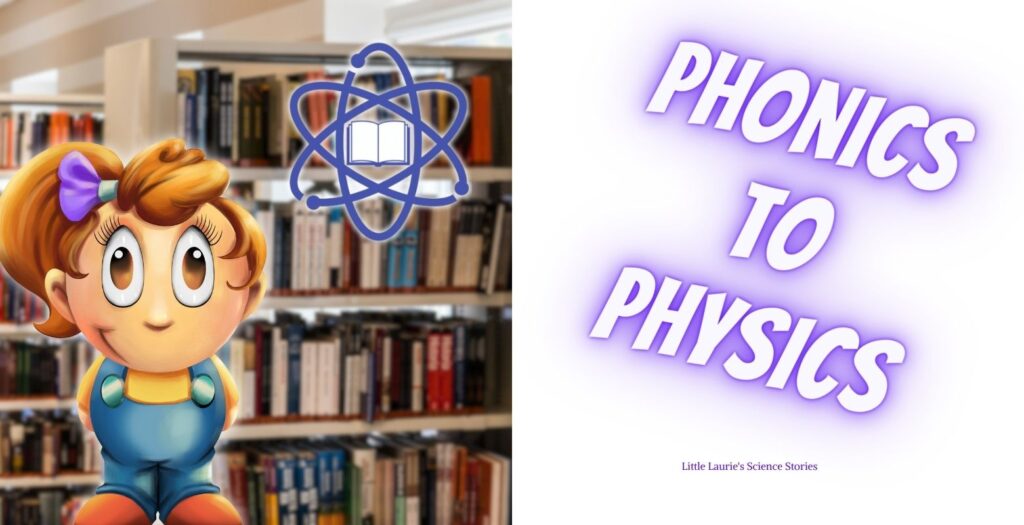Storytelling has a unique power to captivate young minds, making it an invaluable tool in sparking scientific inquiry among early learners. Children are naturally curious, and stories that incorporate scientific elements can help channel this curiosity toward understanding the world around them. A series like “Little Laurie’s Science Stories” allows children to explore scientific concepts within the familiarity of a story, making learning a fun and engaging process.
In tandem with this, a science-based literacy program like the Science of Reading can amplify the benefits of these stories. It offers a structured approach to learning to read, focusing on components such as phonemic awareness, phonics, vocabulary, fluency, and comprehension. This approach equips children with strong reading skills and prepares them for scientific inquiry. Understanding texts, asking questions, making predictions, and interpreting information are all vital skills for both reading and science. Therefore, the combination of science storytelling and a robust literacy program can be a powerful way to foster a love of science and reading in children.
The Science of Reading is a body of research spanning decades that covers how we learn to read and how best to teach reading. It involves understanding the cognitive processes involved in reading and applying this knowledge to develop effective literacy instruction.
The Science of Reading emphasizes the importance of:
- Phonemic Awareness: Understanding that words are made up of individual sounds, or phonemes. This is crucial for developing reading skills as it helps children understand how letters correspond to sounds.
- Phonics: The relationship between phonemes and graphemes (the letters that represent those sounds). Systematic phonics instruction helps children understand the ‘code’ of written language.
- Fluency: The ability to read text accurately, quickly, and with expression. Fluent readers are better able to comprehend what they read because they spend less mental effort on decoding words.
- Vocabulary: Knowing the meaning of a wide range of words improves reading comprehension. Vocabulary is learned indirectly through conversation, being read to, reading independently, and directly through explicit instruction.
- Comprehension: Understanding and interpreting what is read. This involves a range of complex skills, including making inferences, identifying main ideas, and understanding the structure of a text.
The Science of Reading helps young readers with literacy by providing clear, evidence-based strategies for teaching these crucial aspects of reading. It helps educators and parents meet children where they are in their reading development and guide them toward becoming skilled, confident readers.
Including the principles of the Science of Reading is important to the Little Laurie team because strong reading skills are vital for scientific inquiry, even at a young age, for several reasons:
- Access to Information: Reading allows children to access and understand new information about the world. This includes scientific concepts that are fundamental to their understanding of how the world works.
- Understanding Scientific Texts: As children grow, their reading skills will enable them to understand more complex texts, including scientific articles, books, and instructions for experiments.
- Critical Thinking: Reading comprehension skills are closely tied to critical thinking skills. As children learn to understand and interpret texts, they also learn to ask questions, make predictions, and evaluate information – all crucial skills for scientific inquiry.
- Communication: Good reading skills improve children’s written and verbal communication. Being able to communicate effectively is essential for discussing scientific ideas, asking questions, and sharing discoveries.
In short, strong reading skills help children succeed academically across all subjects and pave the way for them to become inquisitive, informed, and innovative thinkers.
“Little Laurie’s Science Stories” is a series that is thoughtfully designed to support the principles of the Science of Reading. The stories are crafted with a mix of easy and appropriately challenging words, which fosters growth in phonemic awareness, phonics, and vocabulary. This mix ensures that young readers can easily decode some words, building their confidence, while other words provide a healthy challenge that promotes their reading development.
The “Little Laurie’s Science Stories” series has been written in the Open Dyslexic font, a typeface specifically created to assist individuals with dyslexia. This unique feature helps to make the magic of reading and scientific discovery accessible to even more children. Through engaging narratives and clear, supportive text, “Little Laurie’s Science Stories” seeks to inspire young readers and budding scientists alike, providing a solid foundation for both literacy and scientific inquiry. The series truly embodies the notion that strong reading skills and a passion for science can go hand in hand, fostering curious minds and future innovators.
Now Available on Amazon: Little Laurie’s Science Stories Vol. 1
The Day the Sun Forgot to Wake


